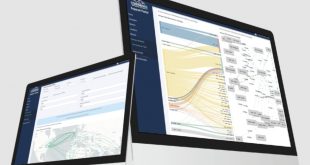In the second part of a sportsbook deep dive, NSoft Chief Operating Officer Drazan Planinic takes a look at the customisation of a retail pre-match offering and the complexities associated with liability monitoring.
Here is the second part of my experiences as the Head of Sportsbook at NSoft. In the first part of the Sportsbook Deep Dive, we discussed the fine-tuning of sports betting software and algorithms.
I mentioned that market trends and technologies are constantly evolving, and those changes somehow steer the further development of Sportsbook.
Another critical factor is that the expansion and legalisation of sports betting worldwide have influenced the fading boundaries that once separated gambling from sports media and professional sports leagues.
Punters’ preferences in sports betting
Some would say punters prefer sports betting on mobile devices more than visiting brick-and-mortar bet shops, but that is not the case. The betting industry has shown explosive growth, and such entails that a sports betting provider has to offer the same quality and presence in the retail and online channels.
Another change is the rapid rise of so-called micro betting – wagering on a specific moment in a game that is about to happen and will not last long. It`s the ability to place wagers on outcomes as narrowly targeted as whether the next play will be a run or a pass, how many yards it will gain, or whether the next free throw will be a make or a miss, or something else.
For brick-and-mortar bet shops, having printed offers available to players at all times is a must, and we had to customise the offer to meet both the needs of operators and punters.
Conversely, the practical and flexible Risk Management tools allow them to minimise risk and increase profits. Still, for that to happen, we went through a process of defining risk management rules and liability parameters.
Customisation of the pre-match printed offer in betting shops
Sportsbooks in the retail channel are demanding for sure. One of the challenges we had to resolve was customising the printed offer for the Pre-Match solution to keep it up to date with the latest statistics and relevant info for the punters. Every bet shop offers printed suggestions for punters to take, read, talk about the offer, share tips among themselves, etc.
For a B2B provider, different markets and clients require a different approach. Thus making the Pre-Match printed offer can take time and effort. These are some of the main issues we faced in the search for the solution for this issue:
Some clients base their offer on tournaments, and print offers tournament by tournament. Some like to have a timeline view and show mixed events from different tournaments where only starting time matters.
Others make leaflets with additional content for the betting shops and need an XLS export for further polishing. Some would like to print statistics with tables along with the offer. Sometimes, the offer is in the landscape or portrait layout.
The tournament IDs need to remain the same for some leagues because punters are used to it, e.g., Premiership from 100-130. Different tournaments are printed with different markets, with more markets on top tournaments, etc.
Every bet shop must print the offer on-demand, on any A4 printer, with up-to-date events and odds.
The solution needed to be highly adaptable to the needs of operators and changes that emerge in bet shops. So, how did we solve these challenges?
In our system, while configuring a printed offer, several parameters need to be set up:
First, the client makes offer templates per sport by selecting sets of markets as a template; after that, the client applies different offer templates on tournaments depending on tournament rank (Premiership has more markets, but the 4th league has only a basic one).
After that, they make as many templates as they want. The number of templates of the offer is broad – there are leaflets, time lists, statistics, and results, depending on which will take data into account.
On the offer template, several columns are selected to know the number of market/outcomes printed on the list. Once offer templates are set up, it’s time to build the actual print templates. You select the print orientation (landscape, portrait), the offer type (time list, tournament list, stats, results, etc.), and the period of events, e.g., for the next ten days to print.
The final thing is to select tournaments and events to be printed. Once everything is done, you can make a preview and correct anything needed. When the client is satisfied with how it looks, it can be sent to print from the Admin panel or the bet shop application.
Here are a few additional tips:
You can always change the offer template on tournaments before print, more or fewer markets depending on, e.g., part of the season. You can always add/remove tournaments or events, or even markets, before printing.
Defining and setting up the parameters of Liability monitoring
The sports betting environment is rapidly changing due to the rise of online betting and the boom of sport-related Apps. During the last few years, sports betting is becoming:
- Much faster due to markets changing on a minute basis.
- Much deeper with more different markets and events available than ever before.
- More complex with the esports boom, bet builder, and more.
These changes also affect how liability monitoring is handled as part of risk management. While we still rely on good old “hard” rules, like different limits per sport, category, tournament, punter, market, and similar, we also needed a more robust way to handle liability and manage risk. So, what do we do to keep track of changes in the sports betting environment without overloading bookies?
Some challenges that we faced:
- Risk levels need to be defined to the smallest detail and maintained in real-time, meaning that bookies can easily change liability, e.g., on a specific market for a particular tournament.
- Different levels of liability need to be tracked simultaneously, like the total company liability, event liability, punter liability, betshop liability, etc.
- Liability parameters need to be combined and calculated, e.g., punters/shops have different liabilities on the same event market.
- Every bet on the ticket has to be calculated separately and added to the total event liability on every market/outcome.
- Current liability on every outcome on every market and event must be calculated whenever a change occurs, e.g., a bet resolves, when the ticket is played, when it is determined, etc.
- On a lost ticket event, liability needs to be released and recalculated for every bet on it.
- Different liability groups need to exist in parallel and be calculated separately, like VIP, regular, etc.
- In some cases or defined threshold levels, tickets are routed to manual authorization.
- Everything has to be freaking fast and modular.
We devised a solution to solve these concerns and many more challenges we encountered along the way. This is how we solved it:
First, the liability limits module is made, allowing the on-demand creation of different liability limits that are calculated separately (VIP, regular, region, etc.) Risk level settings are then created and applied to events and punters as a tool for bookies to distribute liability flexibly in different places.
Liability sources (places where liability is “collected”) are defined; punter, bet shop, tournament. Once everything is set up, liability and risk levels are applied to punters, bet shops, tournaments and similar.
A live dashboard of current liability for all events with open tickets is then created. Everything can then be calculated instantly, and much more.
It’s hard to demonstrate liability management in writing and everything it entails, but I did my best. It’s a demanding and exciting topic, so feel free to join. For a proper understanding of our Risk Management solution, you can always book a demo of our Sportsbook Software.









